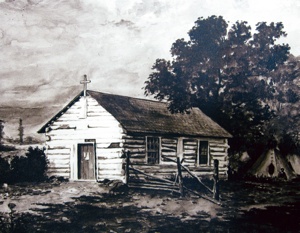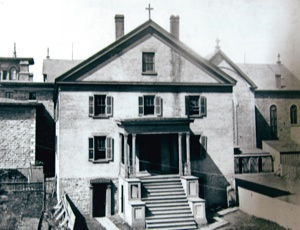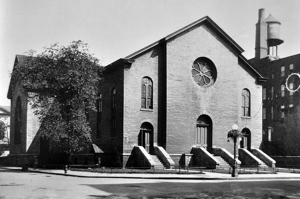The Cathedral of St. Paul that draws thousands of visitors each year from across the country and beyond actually is the fourth cathedral structure in the Archdiocese of
St. Paul and Minneapolis.

The first was a log cabin built in October, 1841, and was called the Chapel of St. Paul. It was located near what is now Kellogg Boulevard, between the Robert and Wabasha Street bridges. The City of St. Paul derives its name from the Chapel of St. Paul.
This log cabin became the first cathedral in 1851 with the arrival of Bishop Joseph Cretin as the first Bishop of St. Paul.

The second cathedral was built on the corner of 6th and Wabasha Streets in downtown St. Paul. It cost just $5,900 to build, and was considered too small from the beginning, hence the need for a third — and bigger — cathedral.

No. 3 was constructed in 1858 and located on the corner of Sixth and St. Peter Streets. This building was significantly larger, able to hold 1,000 people. The first Mass in this building was celebrated in 1858, and was the site where Father (later Archbishop) John Ireland was ordained a priest in 1861. He became the cathedral rector in 1867.
It was also in this building that Father Ireland was consecrated the third bishop of St. Paul in 1884 and the first archbishop in 1888. The last Mass celebrated in this church was by Archbishop Ireland Aug. 30, 1914. Archbishop Ireland later oversaw the building of the current cathedral and celebrated the first Mass there March 28, 1915.




